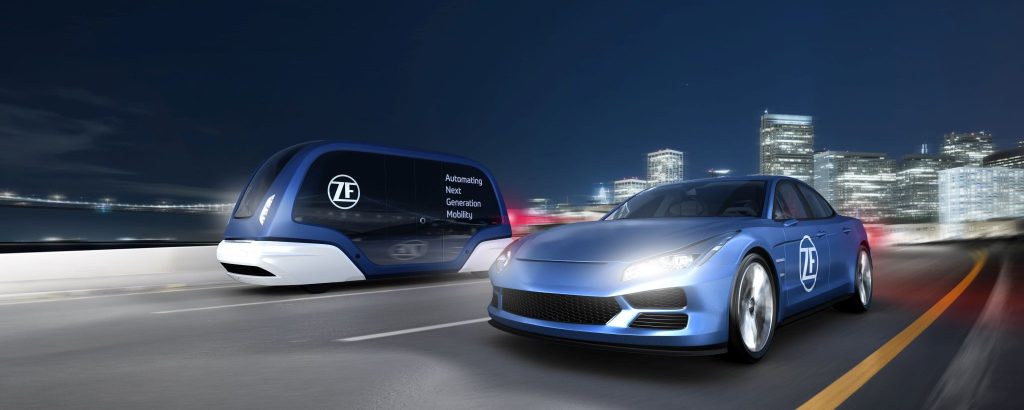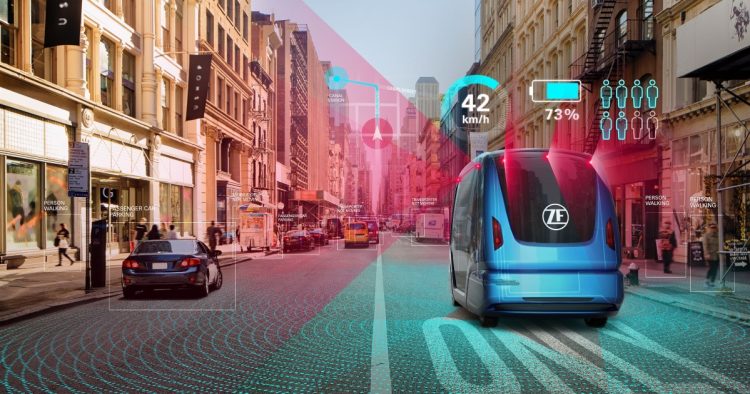Introduction
Climate change is one of the most pressing global challenges of the 21st century. The overwhelming scientific consensus is that the planet is experiencing a rapid increase in temperatures due to human activities, particularly the burning of fossil fuels. Transportation, one of the largest contributors to greenhouse gas emissions, plays a pivotal role in this crisis. In response, many governments, businesses, and individuals are embracing the concept of green mobility—a sustainable approach to transportation that minimizes environmental harm.
But the question remains: can green mobility truly be an effective solution to combat climate change, or is it merely a piece of the puzzle? This article explores the various facets of green mobility, examining its potential to reduce emissions, mitigate environmental damage, and contribute to a more sustainable future.
1. Understanding Green Mobility: What Does It Entail?
A. The Concept of Green Mobility
Green mobility refers to transportation options that are environmentally friendly, energy-efficient, and sustainable. This includes the adoption of electric vehicles (EVs), public transportation, cycling, walking, and car-sharing services. The core principle is to reduce reliance on fossil fuels, lower carbon emissions, and promote alternative modes of transportation that have a minimal impact on the environment.
- Electric Vehicles (EVs): These vehicles run on electricity, which can be sourced from renewable energy, offering a zero-emission alternative to traditional fossil fuel-powered vehicles. As the global fleet of EVs grows, they are seen as a key component in reducing the carbon footprint of personal and commercial transportation.
- Public Transit: Trains, buses, and subways powered by electricity or renewable energy can carry large numbers of passengers, significantly reducing the number of individual cars on the road and decreasing traffic congestion and emissions.
- Non-Motorized Transportation: Walking and cycling are inherently zero-emission modes of transport that reduce the need for short car trips, which are often inefficient and highly polluting.
- Car-Sharing and Ride-Hailing: Sharing rides rather than owning vehicles leads to fewer cars on the road, reducing both traffic congestion and pollution. Many car-sharing platforms now offer fleets of electric vehicles, further enhancing their environmental benefits.
B. Green Mobility Technologies and Innovations
In addition to traditional forms of green transport, several innovative technologies are emerging to make transportation even more sustainable. These include:
- Autonomous Vehicles: Self-driving electric vehicles can optimize driving patterns, reducing energy consumption and potentially leading to more efficient road use.
- Hydrogen Fuel Cell Vehicles: Hydrogen-powered vehicles are another promising alternative to conventional vehicles. When powered by green hydrogen, these cars produce only water vapor as emissions, making them an ideal zero-emission transport solution.
- Integrated Mobility Solutions: Smart cities are increasingly integrating various modes of transport (e.g., e-scooters, bike-sharing, public transport) through digital platforms, allowing users to choose the most efficient and sustainable options for their needs.
2. Green Mobility and Climate Change: Can It Make a Significant Impact?
A. Reducing Greenhouse Gas Emissions
Transportation is responsible for nearly 25% of global greenhouse gas emissions, primarily from road vehicles. Shifting from conventional vehicles to electric ones is one of the most direct and effective strategies for mitigating the impact of this sector on climate change.
- Electric Vehicles (EVs): EVs are a crucial part of the green mobility movement. Over their lifetime, EVs can reduce CO2 emissions by as much as 70-80% compared to conventional vehicles, especially when charged using renewable energy sources. The environmental benefits of EVs grow even more significant as countries transition to cleaner power grids.
- Public Transportation: Mass transit systems, especially those powered by electricity, have the potential to reduce per capita emissions by a large margin. For example, a fully electrified subway system can carry hundreds of passengers with significantly less energy consumption and emissions compared to the same number of passengers driving individual cars.
- Cycling and Walking: Although these modes of transportation may seem less impactful, their environmental benefits are clear. Cycling and walking produce zero emissions and significantly reduce urban congestion, providing an eco-friendly alternative for short commutes.
B. Reducing Air Pollution and Urban Heat Islands
One of the most immediate benefits of green mobility is the reduction in air pollution, especially in cities. Air pollution from vehicle emissions contributes to smog, respiratory diseases, and heart conditions, as well as contributing to urban heat islands—areas that experience higher temperatures due to human activities and the concentration of heat-absorbing materials like concrete.
- EVs and electric public transport systems generate zero tailpipe emissions, directly improving air quality in cities and mitigating the health risks posed by air pollution. This is particularly crucial in regions with high levels of smog or particulate matter.
- Active Transportation: Encouraging cycling and walking not only reduces emissions but also lowers the heat island effect by reducing the number of heat-generating vehicles on the roads. More green spaces, bike lanes, and pedestrian pathways can make cities cooler and more livable.
3. The Role of Green Mobility in Achieving Global Climate Goals
Green mobility is not just a local or regional solution but a critical piece of the global strategy to meet international climate agreements like the Paris Agreement. The world has set ambitious targets to limit global warming to well below 2°C, preferably to 1.5°C, above pre-industrial levels.
A. Decarbonizing the Transportation Sector
To meet global climate targets, the transportation sector needs to achieve near-zero emissions by mid-century. Green mobility plays a key role in this process by shifting away from fossil fuel-dependent transportation systems and embracing sustainable alternatives.
- EV Adoption and Emissions Reduction: As electric vehicles become more widespread, their collective impact could be enormous. In fact, the International Energy Agency (IEA) estimates that if electric vehicles make up 30% of the global fleet by 2030, the sector could cut global emissions by more than 1.5 gigatons of CO2 per year.
- Public Transport and Sustainable Urban Design: Compact, well-designed urban areas that prioritize public transportation, cycling, and walking can reduce the overall demand for cars and cut down on emissions. The creation of car-free zones, expansion of electric buses and trams, and investment in clean transportation infrastructure are essential components of achieving sustainable cities.
B. Integrating Renewable Energy and Mobility
For green mobility to be truly effective in combating climate change, it must be integrated with renewable energy sources. A combination of electric vehicles and renewable power grids can significantly reduce emissions from both the transportation and energy sectors.
- Electric Vehicle Charging: The growth of electric vehicle adoption must coincide with the expansion of renewable energy infrastructure. When EVs are charged using solar, wind, or hydropower, the emissions associated with their operation can be close to zero.
- Energy Storage and Grid Flexibility: Electric vehicles can also play a role in supporting grid stability and energy storage. With vehicle-to-grid (V2G) technology, EVs can help balance fluctuations in renewable energy supply and demand, turning them into mobile storage units for excess energy.

4. Challenges to Green Mobility Adoption
While green mobility holds significant promise, there are several challenges to its widespread adoption that must be addressed to make it an effective solution to climate change.
A. Infrastructure and Accessibility
- Charging Infrastructure: The availability of widespread, accessible, and reliable charging stations remains a major barrier to the adoption of electric vehicles. Governments and private companies must invest in a global network of charging points to make EVs practical for everyday use.
- Public Transport Access: In many regions, public transportation options are limited, inefficient, or poorly integrated into the urban environment. A significant investment in sustainable public transit systems, including electrification of buses, subways, and rail, is needed to make green mobility viable for all.
B. Economic and Social Barriers
- Upfront Cost of Electric Vehicles: Despite falling prices, electric vehicles remain more expensive than conventional cars, primarily due to the high cost of batteries. Governments must continue to offer incentives and subsidies to make EVs affordable for a wider population.
- Behavioral Change: Shifting away from car ownership and adopting shared mobility solutions, cycling, and walking requires significant behavioral change. Public education and awareness campaigns will be necessary to encourage individuals to choose more sustainable modes of transportation.
5. Conclusion: Green Mobility as a Cornerstone of Climate Action
Green mobility is undoubtedly one of the most effective solutions available for combating climate change, reducing air pollution, and achieving a sustainable, low-carbon future. From electric vehicles to public transport and active mobility, green transportation technologies offer significant opportunities to reduce the carbon footprint of the global transportation sector.
However, realizing the full potential of green mobility will require a comprehensive approach that includes substantial investments in infrastructure, renewable energy, and public awareness campaigns. As the world faces the urgent need to meet climate goals, green mobility must be an integral part of the broader strategy to decarbonize economies, improve public health, and protect the planet for future generations.
In the battle against climate change, green mobility isn’t just a solution—it’s the solution.











































